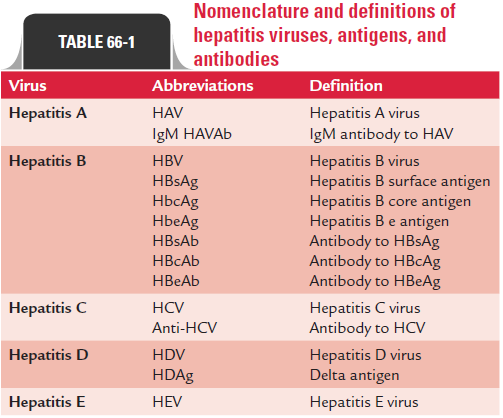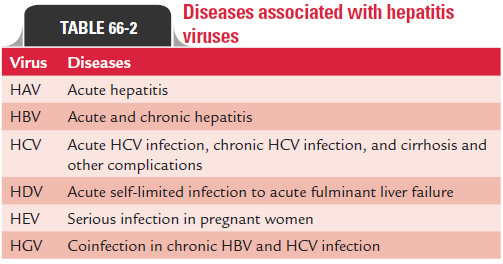Chapter: Microbiology and Immunology: Virology, Virus: Arboviruses
Hepatitis Viruses: Introduction
Hepatitis Viruses
Introduction
Hepatitis is a clinical syndrome caused by many pathogens including viruses. There are six medically important viruses that are called hepatitis viruses because their main site of infec-tion is liver. These viruses are hepatitis A virus (HAV), hepatitis B virus (HBV), hepatitis C virus (HCV), hepatitis D virus (HDV), hepatitis E virus (HEV), and newly described G virus (HGV). Although these viruses infect the liver as common target organ, they however, differ greatly in their morphology, replication pattern, and course of infection. Nomenclature and definitions of different hepatitis viruses, antigens, and antibodies are listed in Table 66-1.

These viruses infect the liver and cause distinct clinical pathology by producing characteristic symptoms of jaundice and production and release of liver enzymes in the serum. Most of these diseases spread very fast because infected individuals are contagious not only during stage of manifestation of the disease but also during the phase of incubation. Human infections associated with hepatitis viruses are summarized in Table 66-2.

Related Topics